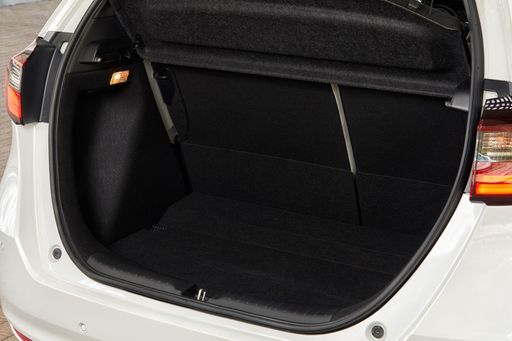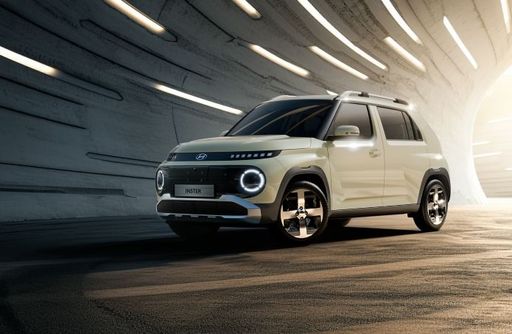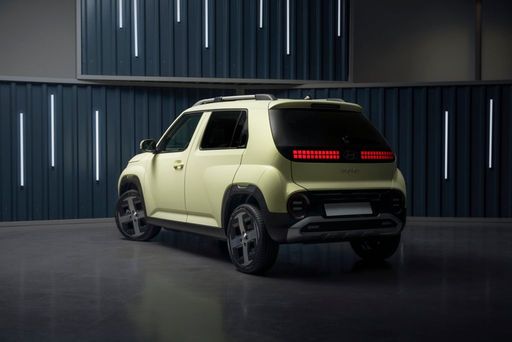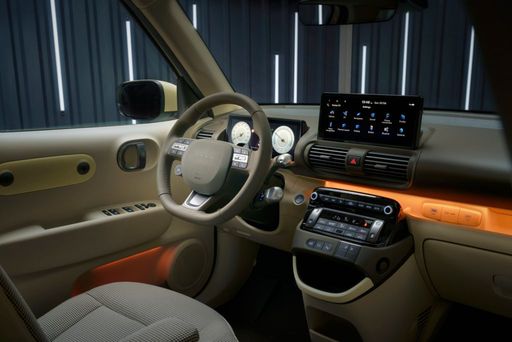Honda Jazz vs Hyundai Inster – Which car suits you better?
Both models have their strengths – but which one suits you more?
Compare performance, efficiency, price and space directly: Honda Jazz or Hyundai Inster?
Costs and Efficiency:
Looking at overall running costs, both models reveal some interesting differences in everyday economy.
Hyundai Inster has a a bit advantage in terms of price – it starts at 20500 £, while the Honda Jazz costs 23100 £. That’s a price difference of around 2615 £.
Engine and Performance:
Power, torque and acceleration say a lot about how a car feels on the road. This is where you see which model delivers more driving dynamics.
When it comes to engine power, the Honda Jazz has a slight edge – offering 122 HP compared to 115 HP. That’s roughly 7 HP more horsepower.
In acceleration from 0 to 100 km/h, the Honda Jazz is somewhat quicker – completing the sprint in 9.40 s, while the Hyundai Inster takes 10.60 s. That’s about 1.20 s faster.
In terms of top speed, the Honda Jazz performs to a small extent better – reaching 175 km/h, while the Hyundai Inster tops out at 150 km/h. The difference is around 25 km/h.
There’s also a difference in torque: Honda Jazz pulls convincingly stronger with 253 Nm compared to 147 Nm. That’s about 106 Nm difference.
Space and Everyday Use:
Cabin size, boot volume and payload all play a role in everyday practicality. Here, comfort and flexibility make the difference.
Seats: Honda Jazz offers to a small extent more seating capacity – 5 vs 4.
In curb weight, Honda Jazz is minimal lighter – 1302 kg compared to 1380 kg. The difference is around 78 kg.
In terms of boot space, the Honda Jazz offers slight more room – 304 L compared to 280 L. That’s a difference of about 24 L.
In maximum load capacity, the Honda Jazz performs a bit better – up to 1205 L, which is about 146 L more than the Hyundai Inster.
When it comes to payload, Honda Jazz slight takes the win – 388 kg compared to 357 kg. That’s a difference of about 31 kg.
Who comes out on top?
Overall, the Honda Jazz shows itself to be leaves the rival little chance and secures the title of DriveDuel Champion.
It convinces with the more balanced overall package and proves to be the more versatile choice for everyday use.
 @ Honda Motor Co., Ltd.
@ Honda Motor Co., Ltd.
Honda Jazz
Honda Jazz
The Honda Jazz is a supremely practical small hatch that hides clever packaging and more usable space than it lets on, with friendly styling and an unfussy charm. It’s economical to run, easy to park and perfect for buyers who want reliable, versatile daily motoring without the hassle.
details @ Honda Motor Co., Ltd.
@ Honda Motor Co., Ltd.
 @ Honda Motor Co., Ltd.
@ Honda Motor Co., Ltd.
 @ Honda Motor Co., Ltd.
@ Honda Motor Co., Ltd.
 @ Honda Motor Co., Ltd.
@ Honda Motor Co., Ltd.
 @ Honda Motor Co., Ltd.
@ Honda Motor Co., Ltd.
Hyundai Inster
The Inster has quickly captured the attention of automotive enthusiasts with its striking design and dynamic performance. This model seamlessly blends advanced technology with comfort, making it an ideal choice for both daily commutes and adventurous road trips. With its spacious interior and innovative features, the Inster promises an exhilarating driving experience that doesn’t compromise on practicality.
details @ Hyundai Motor Company
@ Hyundai Motor Company
 @ Hyundai Motor Company
@ Hyundai Motor Company
 @ Hyundai Motor Company
@ Hyundai Motor Company
 @ Honda Motor Co., Ltd.
@ Honda Motor Co., Ltd.
|
 @ Hyundai Motor Company
@ Hyundai Motor Company
|
|
|
|
Costs and Consumption |
|
|---|---|
|
Price
23100 - 26700 £
|
Price
20500 - 25800 £
|
|
Consumption L/100km
4.5 - 4.8 L
|
Consumption L/100km
-
|
|
Consumption kWh/100km
-
|
Consumption kWh/100km
14.3 - 15.1 kWh
|
|
Electric Range
-
|
Electric Range
327 - 370 km
|
|
Battery Capacity
-
|
Battery Capacity
42 - 49 kWh
|
|
co2
102 - 108 g/km
|
co2
0 g/km
|
|
Fuel tank capacity
40 L
|
Fuel tank capacity
-
|
Dimensions and Body |
|
|---|---|
|
Body Type
Hatchback
|
Body Type
SUV
|
|
Seats
5
|
Seats
4
|
|
Doors
5
|
Doors
5
|
|
Curb weight
1302 - 1320 kg
|
Curb weight
1380 - 1433 kg
|
|
Trunk capacity
304 L
|
Trunk capacity
238 - 280 L
|
|
Length
4089 - 4105 mm
|
Length
3825 - 3845 mm
|
|
Width
-
|
Width
1610 mm
|
|
Height
1526 - 1556 mm
|
Height
1575 - 1610 mm
|
|
Max trunk capacity
1205 L
|
Max trunk capacity
1059 L
|
|
Payload
370 - 388 kg
|
Payload
317 - 357 kg
|
Engine and Performance |
|
|---|---|
|
Engine Type
Full Hybrid
|
Engine Type
Electric
|
|
Transmission
Automatic
|
Transmission
Automatic
|
|
Transmission Detail
CVT
|
Transmission Detail
Reduction Gearbox
|
|
Drive Type
Front-Wheel Drive
|
Drive Type
Front-Wheel Drive
|
|
Power HP
122 HP
|
Power HP
97 - 115 HP
|
|
Acceleration 0-100km/h
9.4 - 9.7 s
|
Acceleration 0-100km/h
10.6 - 11.7 s
|
|
Max Speed
175 km/h
|
Max Speed
140 - 150 km/h
|
|
Torque
253 Nm
|
Torque
147 Nm
|
|
Number of Cylinders
4
|
Number of Cylinders
-
|
|
Power kW
90 kW
|
Power kW
71 - 85 kW
|
|
Engine capacity
1498 cm3
|
Engine capacity
-
|
General |
|
|---|---|
|
Model Year
2023
|
Model Year
2025
|
|
CO2 Efficiency Class
C
|
CO2 Efficiency Class
A
|
|
Brand
Honda
|
Brand
Hyundai
|
Is the Honda Jazz offered with different drivetrains?
The Honda Jazz is offered with Front-Wheel Drive.
The prices and data displayed are estimates based on German list prices and may vary by country. This information is not legally binding.
